Aerosolized Surfactant Research
Nearly 4 million infants die worldwide yearly, with 1 million dying principally from respiratory insufficiency in low- and middle-income countries (LMICs) due to a lack of respiratory support devices and therapies. The DiBlasi Lab has worked with the Bill and Melinda Gates Foundation and industry partners to study aerosolized surfactants. In an effort to bridge a major gap in lung protection and infant mortality from surfactant deficiency and respiratory distress syndrome (RDS), developing a surfactant aerosol and delivery system would prevent or delay disease progression, dramatically reduce airway and pulmonary injury, extend the functional capabilities of nasal noninvasive support (i.e., CPAP) and prevent intubation in a large fraction of infants that would otherwise receive noninvasive mechanical ventilation, or die from surfactant deficiency where ventilators can’t be accessed.
This partnership has led to the development of several lead candidate drug formulations, including synthetic dry powder and liquid surfactant aerosols and breath-synchronized nebulizers that can be safely integrated with nasal CPAP. State-of-the-art research capabilities, like laser diffractometry, are being used to characterize aerosol particle size in the aerosol laboratory. Nebulizer delivery efficiency and safety are evaluated during in vitro experiments to estimate pulmonary medication delivery using realistic high-fidelity breathing simulators and 3D-printed anatomic upper airways. Gamma scintigraphy is used to quantify radioaerosol deposition in the upper airways and lungs and accounts for inadvertent medication losses within the CPAP delivery hoses and interfaces. In vivo studies apply surfactant aerosols in surfactant-deficient lungs to evaluate dose-response effects on gas exchange, lung mechanics, lung injury/inflammation and other physiologic outcomes.
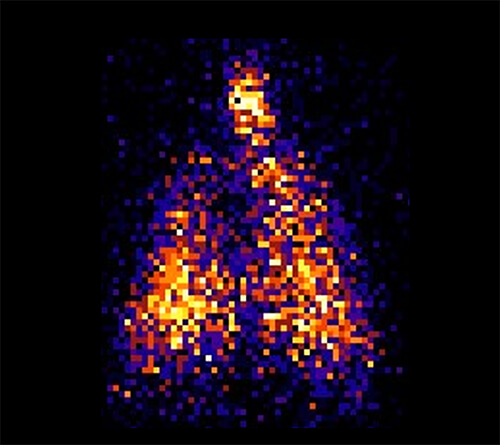
Scintigraphy image of radiolabeled aerosol showing medication deposition within lungs.
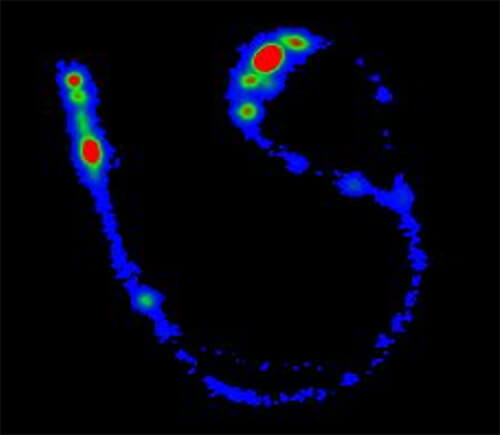
Scintigraphy image of radiolabeled aerosol showing medication deposition within a nasal interface.
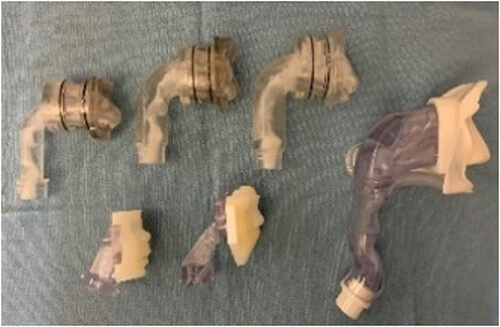
3D-printed anatomic upper airway models.
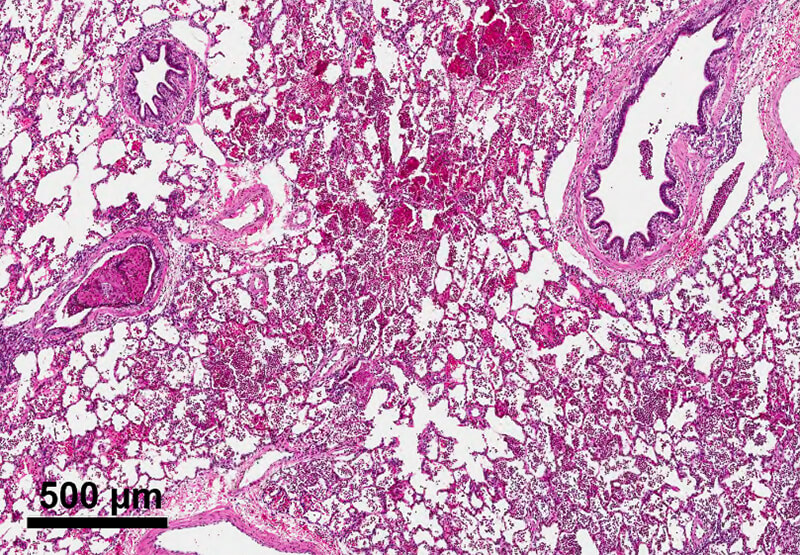
Lung histopathology in a surfactant-deficient subject that did not receive surfactant (left).
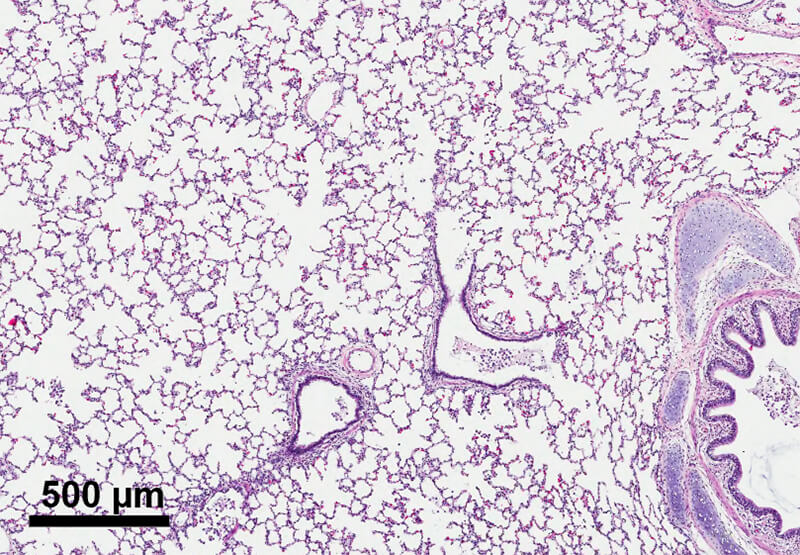
Lung histopathology in a surfactant-deficient subject that received surfactant aerosol during ventilation.